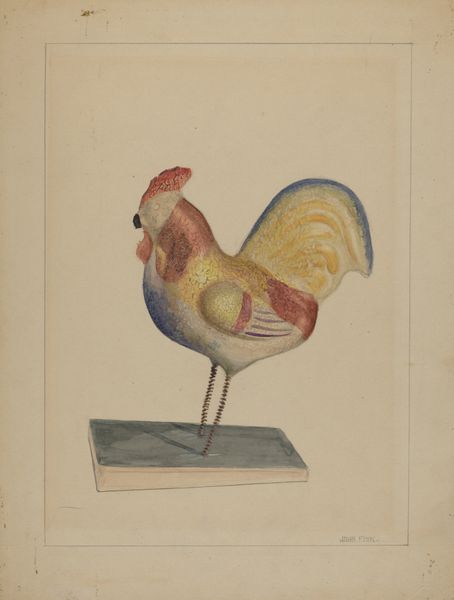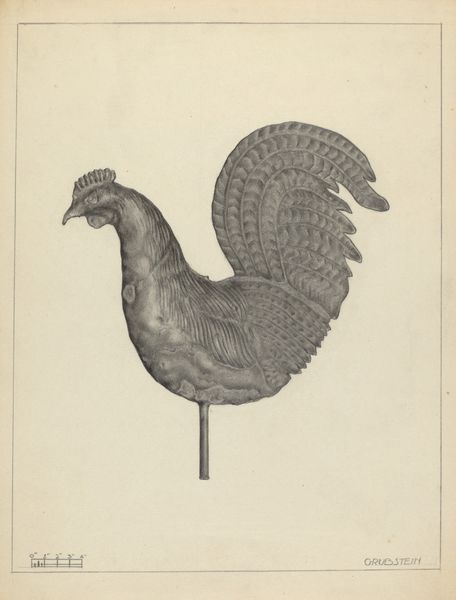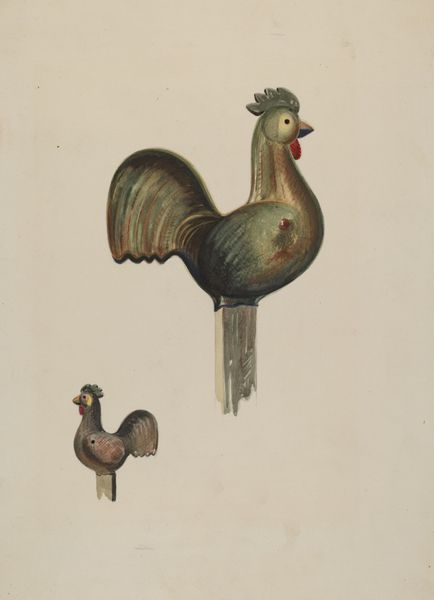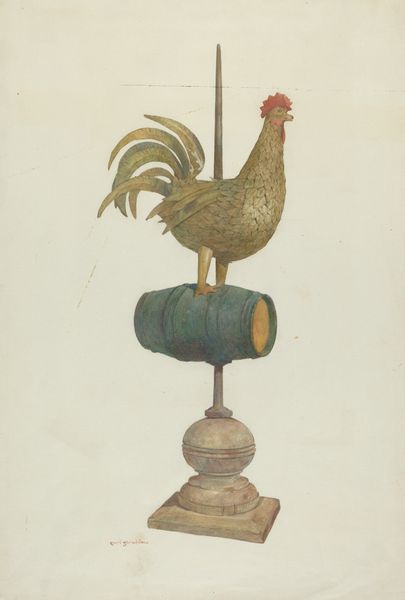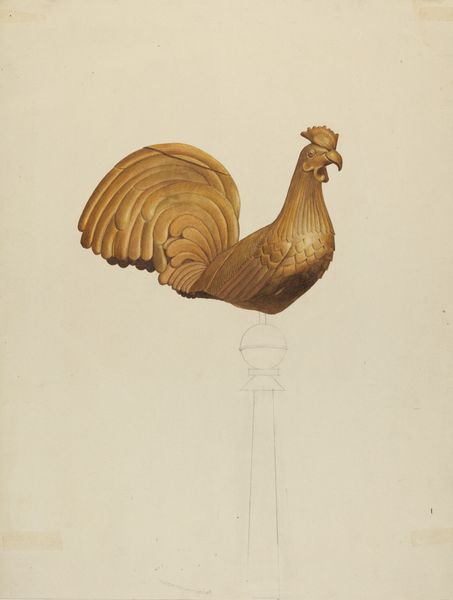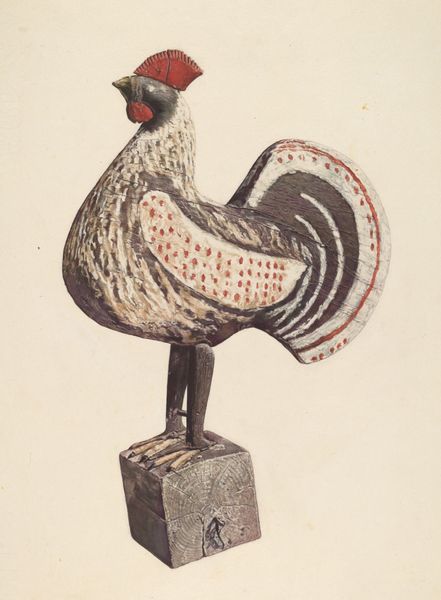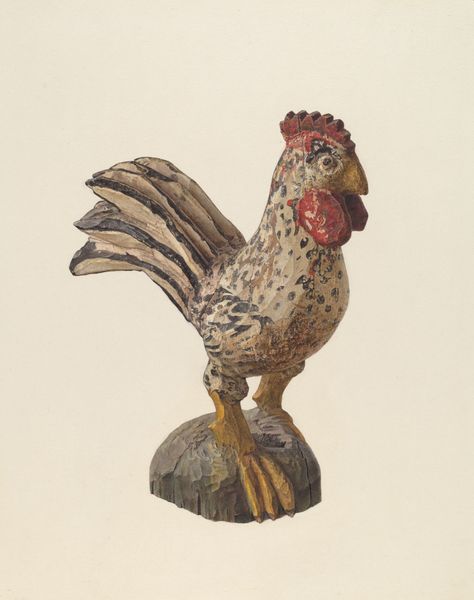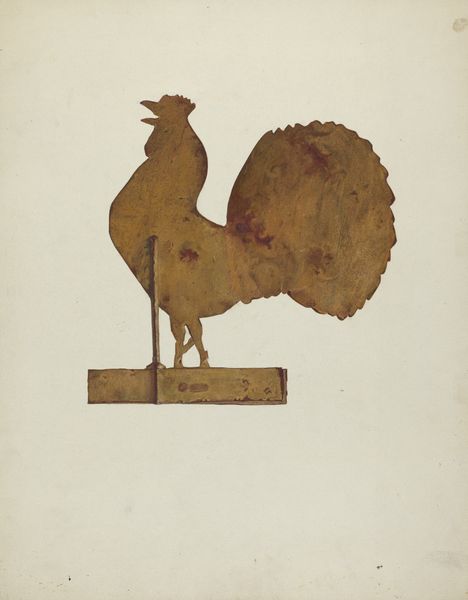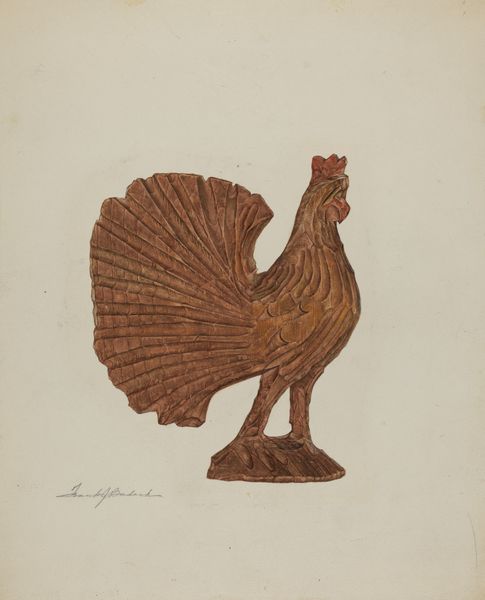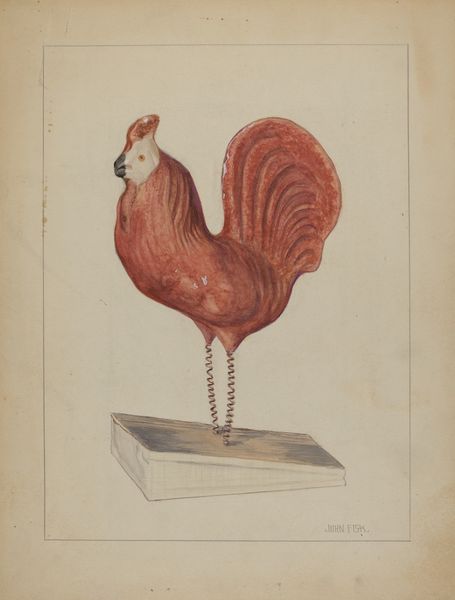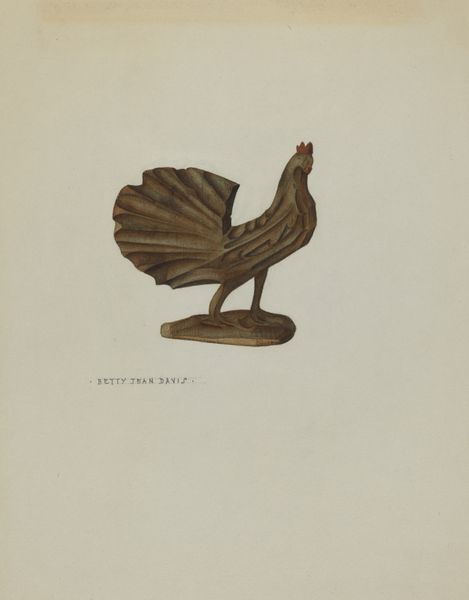
drawing
#
drawing
#
toned paper
#
possibly oil pastel
#
oil painting
#
coloured pencil
#
underpainting
#
watercolour bleed
#
watercolour illustration
#
green and neutral
#
watercolor
#
warm toned green
Dimensions: overall: 36.7 x 27 cm (14 7/16 x 10 5/8 in.)
Copyright: National Gallery of Art: CC0 1.0
Curator: I find myself drawn to the understated presence of this "Carved Bird." Anonymous hands crafted this watercolor illustration on toned paper sometime between 1935 and 1942. Editor: Yes, there's an undeniable sense of nostalgia. It evokes images of a bygone era, perhaps of handmade toys and simpler pleasures, which is immediately interesting given the period when it was made. Curator: Indeed. The material choices here really underscore that. The toned paper, along with what looks like layered applications of watercolor and perhaps oil pastel or colored pencil, suggests a process of both careful construction and intuitive experimentation. It's a sort of folk art object rendered in decidedly refined artistic materials. Editor: I'm particularly interested in the subject—a rooster—an image that, across cultures, symbolizes vigilance, masculinity, even aggression. Given its creation during the tumultuous period of the Second World War, does this figure serve as a subtle commentary on prevailing social norms and the anxieties of that era? Is this a figure charged with expectation, and perhaps the weight of conflict, stood upon that raw, half-moon support? Curator: That's a fascinating interpretation! It certainly prompts one to consider the labor involved – both in creating the wooden model and meticulously depicting it through painting. We must remember that the 'means of production,' from the harvesting of pigments to the fashioning of wood, are all inherently connected. The craft itself becomes a language. Editor: Exactly! It pushes us to examine how labor, materiality, and symbolic representation converge within a specific historical context. There is that somewhat distressed semi-circle acting as a stand: does its visible rawness serve as a metaphor for the era's unfinished projects, its interrupted narratives, its state of 'becoming?' Curator: A compelling notion. For me, that roughly-hewn base, presented against the carefully articulated plumage, creates an intriguing tension between naturalistic depiction and tactile reality. I'm curious, what are your closing thoughts? Editor: It speaks to the power of art as both a reflector of its time and a poignant statement on the intersection of identity, labour, and cultural expectation. Curator: Absolutely. And for me, this "Carved Bird" highlights the enduring allure found when skillful creation meets humble materials, yielding profound expression.
Comments
No comments
Be the first to comment and join the conversation on the ultimate creative platform.

